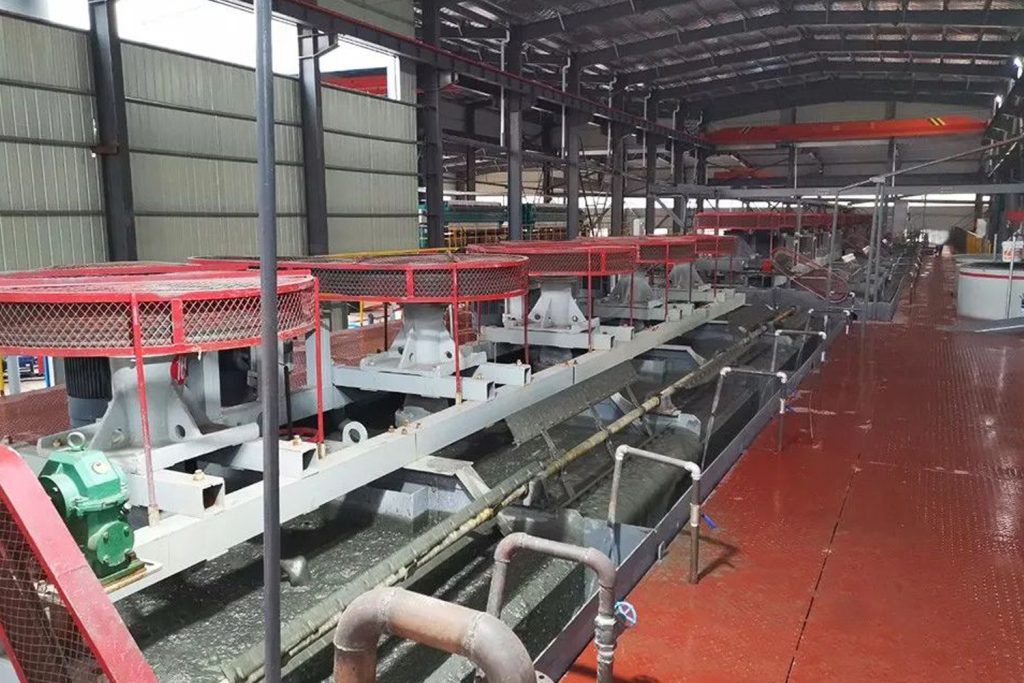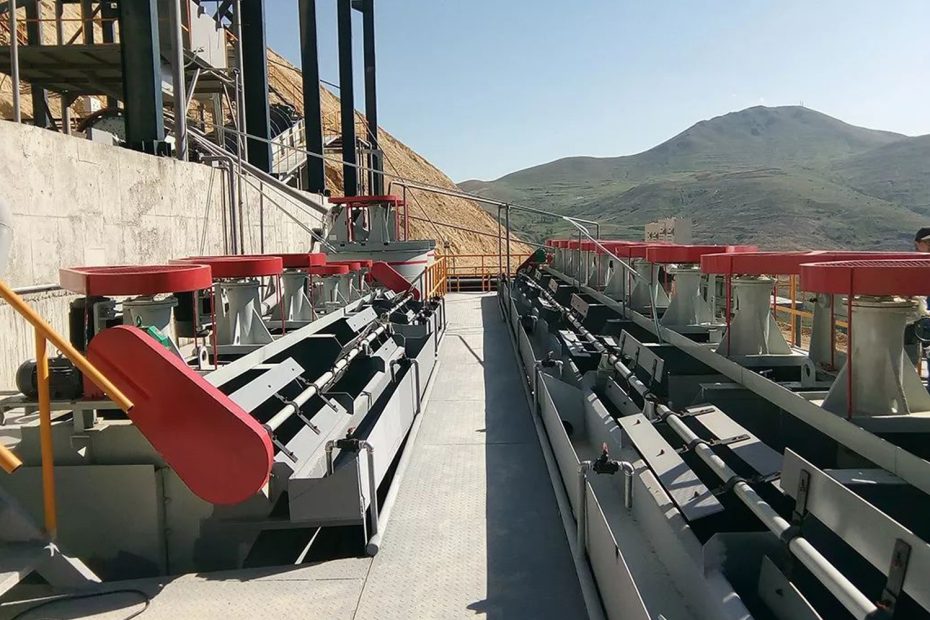Hard rock lithium ore is a kind of lithium ore with high hardness and density. Lithium ore exists in the state of spodumene, lithium feldspar, lepidolite and other ores. These minerals have experienced high temperature and high pressure during the geological formation process, so the physical properties of hard rock lithium ore are relatively stable and are not easily eroded by chemical substances. Due to the complex mineral composition of hard rock lithium ore, it is more difficult to mineral processing. For this type of lithium ore mineral processing, the mineral processing methods include dense medium separation, flotation and so on.
Separation of dense medium for hard rock lithium ore
Dense medium mineral processing is a mineral processing method that uses density difference between dense medium (a high-density liquid or suspension) and minerals to separate, and is suitable for minerals with large particle size and small density difference. Dense media mineral processing can be used to separate tourmaline, mica and other gangue minerals from spodumene. The factors affecting the separation of dense media include the difference in specific gravity of minerals, the dissociation degree of lithium minerals, the particle size of feed material, the type and specific gravity of dense media, etc.
Generally, the heavy medium separation of lithium ore is to mix the lithium ore after ore washing and desliming with heavy medium for separation, and heavy products and light products can be separated. The heavy product is spodumene concentrate, and the light product is gangue tailings.
Flotation of hard rock lithium ore
Hard rock lithium ore flotation is a physical and chemical process that utilizes the hydrophilic and hydrophobic properties of the mineral surface to separate useful minerals from gangue minerals through bubble attachment. Its purpose is to enrich minerals with high lithium content such as spodumene, lepidolite, lithium permeal, etc. from low-grade or complex hard rock lithium ores, so as to improve the recovery rate and grade of lithium.
The effect of flotation is affected by many factors, mainly including mineralogical characteristics, particle size distribution, reagent system, operating parameters, etc. Different lithium minerals have different flotation characteristics, and it is necessary to select suitable collectors, regulators, frothers, etc. according to their chemical composition, crystal structure, and surface properties. The particle size distribution will also affect the flotation efficiency. Generally speaking, too fine or too coarse particle size is not conducive to flotation. Operating parameters include flotation time, concentration, pH value, stirring speed, air velocity, etc., which need to be optimized according to the actual situation.
In order to obtain better mineral processing effect of hard rock lithium ore flotation, it is often pretreated before flotation. Pretreatment refers to cleaning or modifying the surface of spodumene before flotation to improve its flotation selectivity.
Commonly used pretreatment methods mainly include chemical pretreatment, desliming, magnetic separation, etc.

- Chemical pretreatment is usually carried out during the grinding process, which can improve the flotation recovery rate of spodumene, but it is necessary to select appropriate chemical reagents and control the pH value.
- Desliming uses hydrocyclones or other equipment to reduce the interference of ore slime on the flotation process, usually before flotation, which can improve the separation selectivity.
- Magnetic separation is usually used to remove a large amount of iron-containing gangue minerals, such as tourmaline, hornblende, etc. For lepidolite with high iron content, magnetic separation can also be used for enrichment.
In addition, by using the differences in color, shape, density or electromagnetic properties between spodumene, lithium petalite, lepidolite, etc. and gangue, automated or manual sorting techniques are used to identify and separate them from other materials.
In conclusion
The mineral processing method of hard rock lithium ore is introduced above, including dense medium separation and flotation. These methods all need to select appropriate parameters and reagents according to the characteristics and conditions of the minerals to achieve the ideal mineral processingn effect. Since the mineral composition of hard rock lithium ore is relatively complex, it is difficult to mineral processing. Therefore, it is very necessary to conduct mineral processing tests, which can provide technical basis and optimization schemes for industrial production.
